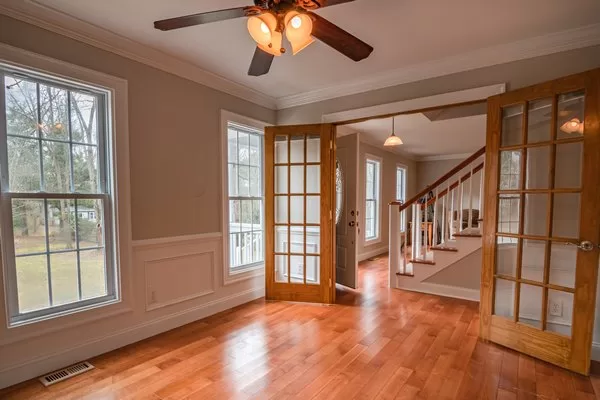
– by Akash Pharande, Managing Director – Pharande Spaces
Covid-19, along with its unexpected boost to the housing market, has come and gone – and yet, residential real estate continues to sell at a rapid clip, after many years that saw developers struggling with low demand and mounting inventory.
How did this happen? Is this demand sustainable? Is it a bubble that will soon burst? Let’s examine.
No doubt, the housing sales bull run began during the Covid-19 pandemic, which significantly improved homebuyer sentiment and made housing autonomy the new watchword during and soon after the lockdowns. But the pandemic is more or less over. All restrictions on movement and travel have been dropped.
What is driving housing demand now? The simple answer is – a completely reimagined homeownership sentiment coupled with vastly improved investment logic.
Covid-19 gave the needed impetus as Indians realized the drawbacks of renting and the need for control over the family’s safety and well-being in times of unprecedented turmoil. Prices were low, and the RBI had brought down interest rates to fuel demand.
However, the pandemic did more than induce buying on the back of lower cost of acquisition. It fundamentally changed Indians’ relationship with their homes and perception of work.

Homeownership Reimagined
The hybrid work culture has taken firm root, and many companies continue to allow it. The gig work economy is also firmly entrenched – so much so that major IT companies decided to clamp down on ‘moonlighting’ by their employees. The quest for entrepreneurship, both Internet-based and traditional, also took off during Covid-19 and shows no signs of slowing down even now.
For these reasons, the home continues doubling as a part-time workplace and remains as important as ever. Simultaneously, housing prices have increased again, making residential real estate the top-performing asset class for over two years. This has brought back investors intent on snapping up choice options for healthy rental income and capital appreciation.
Even if we disregard the above demand drivers, another established market dynamic is at play – high demand for any product generates more demand in a well-known snowball effect. There are elements of FOMO (fear of missing out) involved as more and more Indian see their neighbors ditch the rental trap and move into their own homes.
After all, buying a home is still considered the pinnacle of financial independence and social ‘arrival’ in India.
What the Data Tells Us
Sales have skyrocketed, and pent-up inventory has been decreasing steadily. According to real estate consultants Anarock, the robust housing sales momentum in Q1 2023 brought down residential inventory in the 7 large metros to just 20 months, from 42 months by Q1 2018-end – the lowest overhang in five years. In this quarter, around 1,13,770 homes were sold in these cities, an increase of 14% over Q1 2022.
The demand is highest for bigger homes, with sales of 2, 3 and 4 BHK homes outstripping that of affordable smaller homes. Bigger homes can multi-task most efficiently when managing domestic and work life and are also in the highest demand on the resale market.
International real estate consultancy CBRE’s ‘India Market Monitor Q1 2023’ shows extraordinary growth in the sales of luxury homes in Q1 2023 – a massive 150% year-on-year growth in these top seven cities. As many as 4,000 luxury homes were sold this quarter, as opposed to 1,600 in the same period the year before.

Supply follows demand. According to a survey by real estate data analytics firm PropEquity, the number of homes sold in tier-1 cities in India in Q1 2023 considerably outstripped the number of units launched in this period. In these, 93,600 residential units were launched during the January to March 2023 quarter compared to 123,938 sold units.
By all yardsticks, the Indian housing market is on an unprecedented roll and shows no signs of slowing down anytime soon. Neither increasing home loan interest rates nor rising prices have slowed down demand, ensuring that it is sustainable and on a constant upward trajectory.
The Housing Investor Returns
Due to the consistently high end-user demand, investors have also gotten back into the fray. After several years, housing prices have begun increasing again – by as much as 7% in Q1 2023 alone, according to a report by PropTiger.com. Residential real estate is now the top-performing asset class, and housing prices do not fluctuate madly like stocks and precious metals.
Buy Now or Wait and Watch?
After the RBI hiked the repo rate several times and then maintained it at 6.50%, home loan interest rates also increased. However, there are chances that the RBI will now bring down the repo rate in the coming monetary policies.
Should hopeful homebuyers wait for this to happen? Should end-users approach a home purchase with such a mindset?
While interest rates may come down in the future, property prices will rise. The increased value of the acquired property will compensate for a marginal percentage hike – as already seen, property prices are rising quickly now.
Also, most Indians don’t want to buy just any house. In most cases, they have already shortlisted the most desirable options. They may even have identified their #1 preference, at least for the most desirable project, if not the exact unit.
Considering the current sales velocity, these properties may no longer be on the market when the RBI announces lower repo rates and banks recalibrate their home loan lending rates. Waiting for too long can involve what is known as a high ‘opportunity cost’ – the loss of potential gain from one alternative (buying now) when another alternative (buying later) is chosen.
There are other factors to consider while deciding on buying a home now:
1. Whether buying a home big enough to accommodate future requirements such as added family members, a home office, and generally enough buffer space to not be crowded.
2. There is little point in buying smaller, costlier homes in central locations if the buyer can work remotely and live more spaciously in a cheaper suburb well-connected to the workplace by public transport.
3. The project should have enough lifestyle amenities, especially health-boosting features like a jogging track, swimming pool, tennis court, and gym. The pandemic has highlighted the need for greater health focus and the importance of good security and green open spaces.
Some of the top integrated township properties are now the top option for those who want a better quality of life, adequate connectivity to work, and superior capital appreciation on their investment. Don’t just buy four walls – invest in a future-proofed lifestyle.
Final Thoughts
We are at an inflection point in the annals of Indian housing market history. Covid-19 kick-started it, but the gained momentum was independent of the pandemic. Across the country and beyond, Indians are firmly on the homebuying bandwagon.
While these are exciting times when an unprecedented number of homeownership dreams are finally being realized, they are also troubled regarding the global economic outlook and its undoubted impact on India’s consumption story.
Depending on in which industry they are employed and at which level, homebuyers must judge their situation carefully before pressing the commit button on a home loan. But, as we can see by the unrelenting sales numbers, securing an owned home remains most Indians’ top priority.
About the Author:
Akash Pharande is Managing Director – Pharande Spaces, a leading real estate construction and development firm famous for its township projects in West Pune and beyond. Pharande Promoters & Builders, the flagship company of Pharande Spaces and an ISO 9001-2000 certified company, is a pioneer of townships in West Pune.
